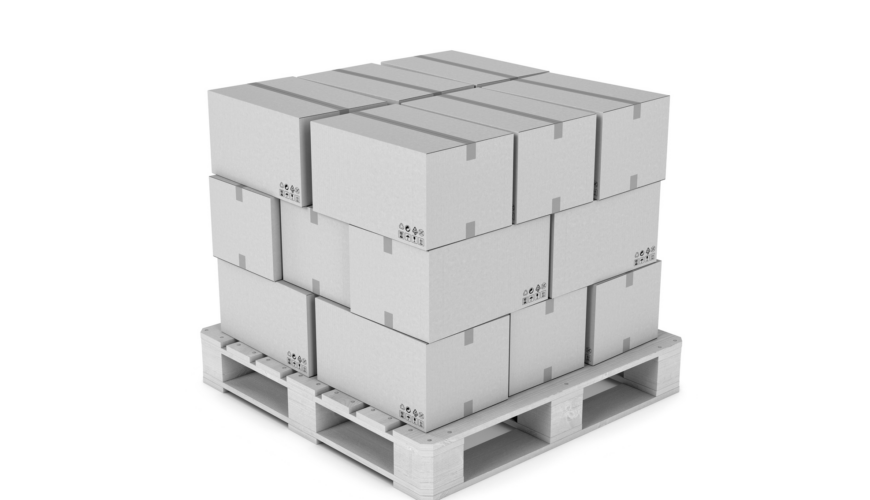Want to know the best configuration for stacking GMA pallets, maximizing space utilization, ensuring stability, and optimizing warehouse operations? Use this step-by-step approach to help you find solutions. Efficiently stacking cartons on a pallet is essential for maximizing storage space, ensuring stability during transportation, and optimizing warehouse operations. This article explores the steps and considerations involved in determining the best possible configuration or pattern for stacking cartons on a standard 48″ x 40″ Grocery Manufacturers Association (GMA) pallet. We’ll provide logical reasoning and formulas to help you achieve an optimal stacking solution.
Step 1: Understand Pallet Dimensions and Carton Sizes
Before determining the stacking configuration, it’s crucial to understand the pallet’s dimensions and the cartons’ sizes to be stacked. A standard GMA pallet typically measures 48 inches in length and 40 inches in width. Additionally, you need to know the dimensions of the cartons (length, width, and height) to ensure they fit efficiently on the pallet.
Step 2: Calculate Available Pallet Space
Next, calculate the available space on the pallet where cartons can be stacked. This involves determining the usable area of the pallet’s surface, excluding any obstructions such as pallet edges or protruding nails. The usable space will be slightly less than the total area of the pallet due to these obstructions.
Formula: Available Pallet Space = (Pallet Length – Pallet Edge Clearance) × (Pallet Width – Pallet Edge Clearance)
Step 3: Determine Carton Placement Orientation
Decide on the orientation in which cartons will be placed on the pallet. This decision should consider factors such as carton stability, weight distribution, and accessibility for handling equipment. Cartons can be stacked lengthwise (parallel to the pallet length) or widthwise (parallel to the pallet width), depending on which orientation maximizes space and stability.
Step 4: Calculate Carton Coverage Area
Calculate the total area occupied by each carton when placed on the pallet. This will help determine how many cartons fit within the available pallet space and guide the stacking configuration.
Formula: Carton Coverage Area = Carton Length × Carton Width
Step 5: Determine the Stacking Pattern
Based on the carton coverage area and available pallet space, determine the optimal stacking pattern that maximizes carton density while ensuring stability and ease of handling. Experiment with different configurations, considering factors such as carton size, weight, stacking height, and stability requirements.
Common stacking patterns include:
- Column Stacking: Stacking cartons in columns along the length or width of the pallet.
- Interlocking Stacking: Alternating cartons to interlock and distribute weight evenly.
- Pyramidal Stacking: Building a pyramid-shaped stack for stability and weight distribution.
Step 6: Calculate Maximum Stacking Height
Calculate the maximum stacking height achievable with the chosen configuration. This involves considering each carton’s height, weight restrictions, and the overall stability of the stack.
Formula: Maximum Stacking Height = (Available Pallet Height – Pallet Top Clearance) / Carton Height
Step 7: Optimize Stacking Configuration
Optimize the stacking configuration by adjusting carton placement, orientation, and stacking pattern to achieve the maximum stacking height while ensuring stability and safety. Fine-tune the configuration to minimize wasted space and maximize the number of cartons per pallet.
Step 8: Test and Evaluate
Once you’ve determined the stacking configuration, conduct a test by physically stacking cartons on the pallet according to the chosen pattern. Evaluate the stability, load-bearing capacity, and ease of handling to ensure the configuration meets your requirements.
Efficiently stacking cartons on a 48″ x 40″ GMA pallet requires careful planning and consideration of pallet dimensions, carton sizes, and stacking patterns. Following the steps outlined in this article and using the provided formulas, you can determine the best possible configuration for maximizing space utilization, ensuring stability, and optimizing warehouse operations. Experiment with different configurations to find the most suitable solution for your needs.
Need help? Call or email us with your specific GMA pallet puzzle
We will run it through our calculation software. The answer will be provided without charge. Here’s the information we need:
- Carton dimensions
- Length
- Width
- Height
- Carton weight
- Stacking limitations (can only stack X high)
- Maximum load height (including 6.5” tall GMA pallet)
- Allowable overhang (over the edges of the pallet)
Send your inquiry to info@OPSdesign.com with “GMA Pallet Calculator” in the subject line.


